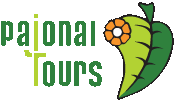top of page
Tribute
Experience the awe-inspiring beauty of the Galapagos aboard the Tribute Cruise. Designed for nature enthusiasts, this luxury vessel offers world, class amenities, expert guides, and three exclusive routes through wildlife-rich islands. Discover untouched wonders and create unforgettable memories, all in ultimate comfort. Your journey begins here.

bottom of page



